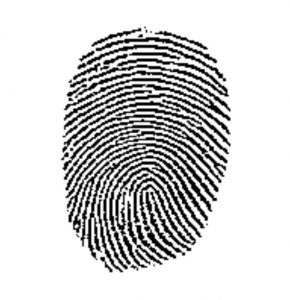Sufficiency of Latent Fingerprint Evidence for Probable Cause Purposes
Latent fingerprint analysis is an oft-used investigatorial technique used to demonstrate a criminal defendant’s presence at a crime scene or a place where he or she is not supposed to be. In several reported decisions discussed below, probable cause to arrest can be found based on a latent fingerprint with the addition of some “plus” factor. However, it is the contention of this post that a single fingerprint found in an innocuous location at scene of an alleged crime — without corroboration — is insufficient to support reasonable cause. As a result, an arrest based solely on such evidence would be illegal.

PROBABLE CAUSE STANDARD
It is well-established that under New York law, a police officer “may arrest for an offense without a warrant if he has reasonable cause to believe that a person has committed that offense. . . .” People v. Maldonado, 86 N.Y.2d 631, 635 (1995). Probable cause “does not require proof sufficient to warrant a conviction beyond a reasonable doubt but merely information sufficient to support a reasonable belief that an offense is being committed or that evidence of a crime may be found in a certain place.” People v. Bigelow, 66 N.Y.2d 417, 423 (1985). Rather, probable cause “exists when an officer has knowledge of facts and circumstances ‘sufficient to support a reasonable belief that an offense has been or is being committed.” Maldonado, 86 N.Y.2d at 635. While “probable cause does not require the same quantum of proof necessary to support a conviction, it does require the existence of facts and circumstances which, viewed together, would lead a reasonable person possessing the same expertise as the arresting officer to conclude that an offense has been or is being committed, and that the defendant committed or is committing the offense.” People v. Bradshaw, 76 A.D.3d 566, 570 (2d Dep’t 2010).
DISCUSSION
The finding of a latent fingerprint matching the defendant’s fingerprint, standing alone, would not constitute reasonable cause to arrest him. The reported decisions regarding the finding of a latent print all share a common factor: corroborating or other information suggestive of the commission of a crime. For example, People v. Snipes, 289 A.D.2d 116 (1st Dep’t 2001), was a matter involving the robbery of a jewelry store. The Appellate Division, First Department upheld the Supreme Court’s decision where the fingerprint was found “in an area of the store that had been thoroughly cleaned immediately before the robbery.” Id. Similarly, in People v. Catti, 19 A.D.3d 703, probable cause to arrest was found in a case where the defendant’s “fingerprints were found on an air conditioner in a rear window of one of the [dwellings that had been burglarized], which perpetrator pushed into the house to gain access.” Id. at 704. Again, in People v. Winter, 26 Misc. 3d 1224A (Sup. Ct. Kings Co. 2009), the trial court found probable cause where the defendant’s fingerprint was found on a bottle of ammonia that had been used during the commission of a murder. In People v. Lapiere, probable cause was found where a latent fingerprint was found on a table adjacent to the homicide victim’s body, and a witness observed a vehicle matching the description of defendant’s car parked near the residence at the approximate time of the homicide. 245 A.D.2d 1077. Finally, in People v. Bigio, 237 A.D.2d 453 (2d Dep’t 1997), probable cause was found where the police found the defendant’s fingerprint on a bag recovered from a stolen van where a body was found “and because, upon seeing the police in the hallway outside his apartment, the defendant immediately took flight through an open window . . . .”
What all of these cases have in common is that there was something in addition the mere presence of the fingerprint that tied the defendant to the alleged crime. Where a defendant’s latent fingerprint was found, say, inside an apartment in an innocuous place, no finding of probable cause should maintain. Where the sole piece of evidence against the defendant at the time that he was arrested was the fingerprint, the case would be readily distinguishable from Snipes, Catti, Winter, Lapiere and Bigio. To be sure, in Snipes, the court ruled that the People were not required to rule out any reasonable possibility that defendant left his fingerprints at some time prior to the robbery. See Snipes, 289 A.D.2d at 75. However, in a case where there was no “plus factor,” such as an eyewitness corroborative account or a temporal link clearly tying the defendant to the commission of the crime, a probable cause finding would be unsupported. Simply put, absent any additional corroborating factor as is present in all of the abovementioned fingerprint cases, an investigating detective should have to come up with more evidence than just a fingerprint.







